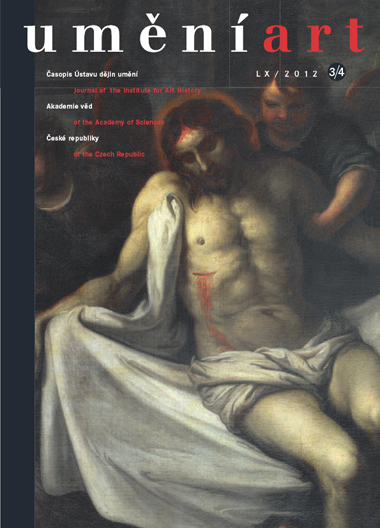Blanka Kubíková
Il Principe dello Studiolo in Czech Collections: Two Portraits of Francesco de´Medici
The collection of portraits of Francesco de' Medici, Duke of Tuscany (1541-1587), can be extended to include two little known paintings from collections in the Czech Republic, which have been newly identified in this article. On the basis of the Duke's appearance and the style in which the paintings have been executed, both portraits can be dated to around the year 1570. Both of them are closely related to other portraits of the Duke from this period (in particular the likeness by Maso da San Friano in the Palazzo Comunale in Prato, the portrait drawing published by Peter Cannon Brookes, the three-quarter-length portrait of the Duke in the Uffizi collections, and others). The first painting, in the chateau in Červená Lhota, represents a completely new iconographic type among the known portraits of the Duke. It portrays Francesco de' Medici standing, with a sword, and with his right hand pointing to a place outside the frame of the painting. The portrait has been attributed to Alessandro Allori on the basis of stylistic parallels. The second portrait, in the chateau in Opočno, returns in terms of typology to youthful portraits of Francesco with a medallion from around 1560. Glyptics was one of Francesco's interests, and so portraying the Duke with a precious object like this is not surprising. At the time the painting was made, the decoration of the Studiolo was being carried out, and valuable objects just like this were preserved there. The portrait does not represent the usual type of impersonal representative portrait; it is imbued with a melancholy atmosphere and was probably intended for private use. The painter of the portrait has been tentatively identified as Mirabello Cavalori, one of the artists involved in the decoration of the Studiolo, a painter with relaxed brushwork and sophisticated use of colour. The works presented in the article do not portray the Duke in the form of an official portrait of a ruler - a type that we find almost exclusively in European courts in the 1570s, and which includes the likenesses of Duke Cosimo I and the contemporary portrait of Francesco in the Uffizi mentioned above - but on a more intimate level. They depict a cultivated man with a pensive gaze, a man who by his nature inclined towards science and art, but whom fate had placed at the head of an important Italian state.
Full-text in the Digital Library of the Czech Academy of Sciences:
https://kramerius.lib.cas.cz/uuid/uuid:bdea2c21-ddb4-1523-e223-9c1ea831cf16
< back

